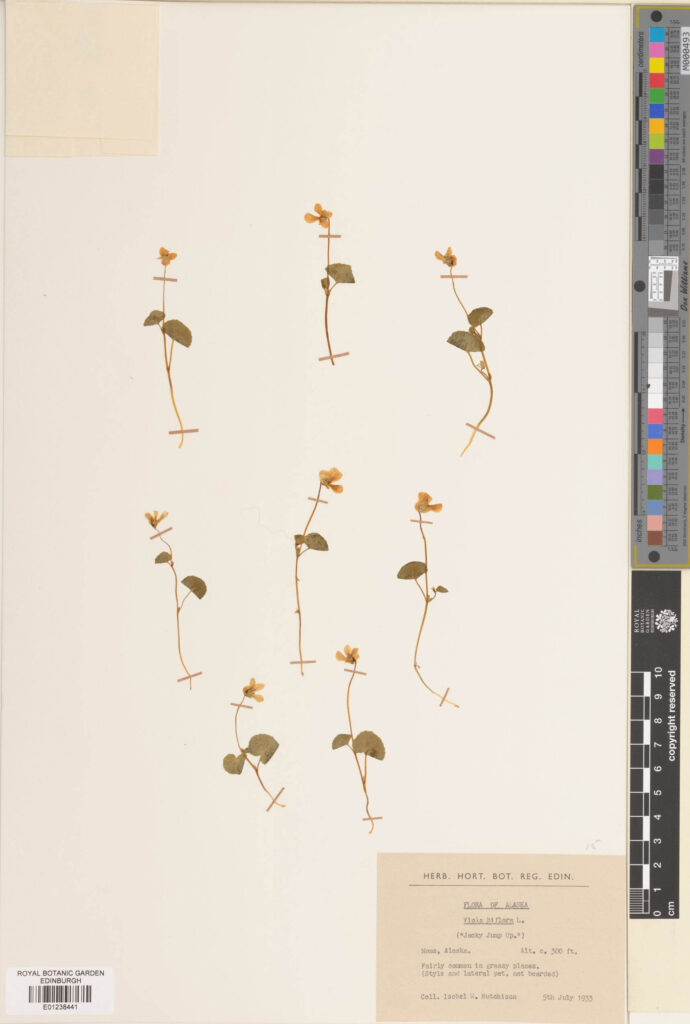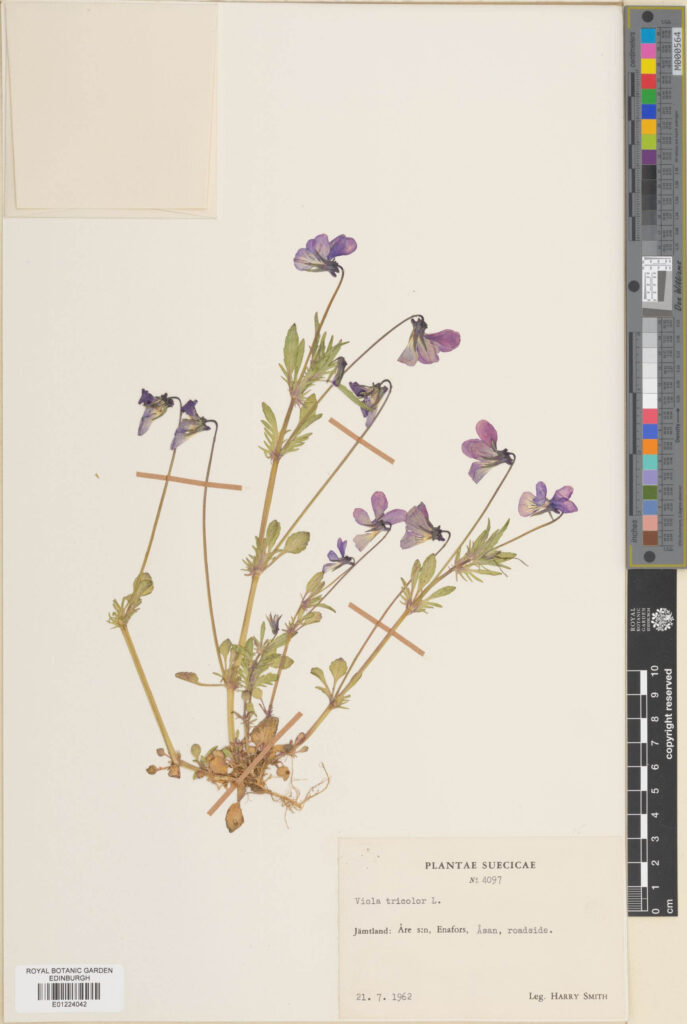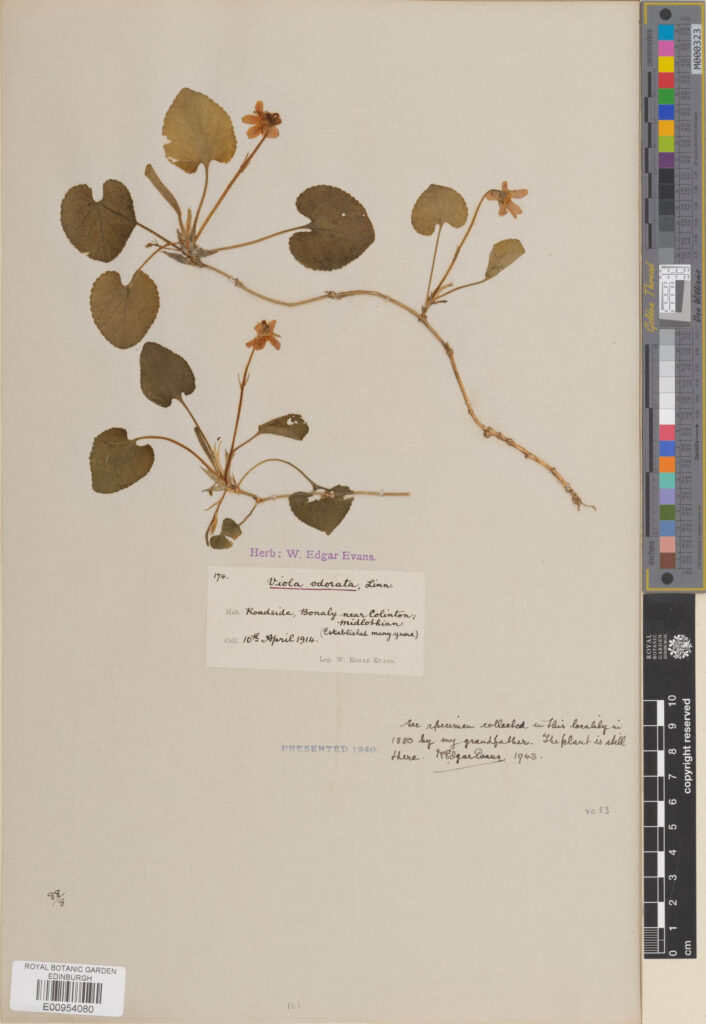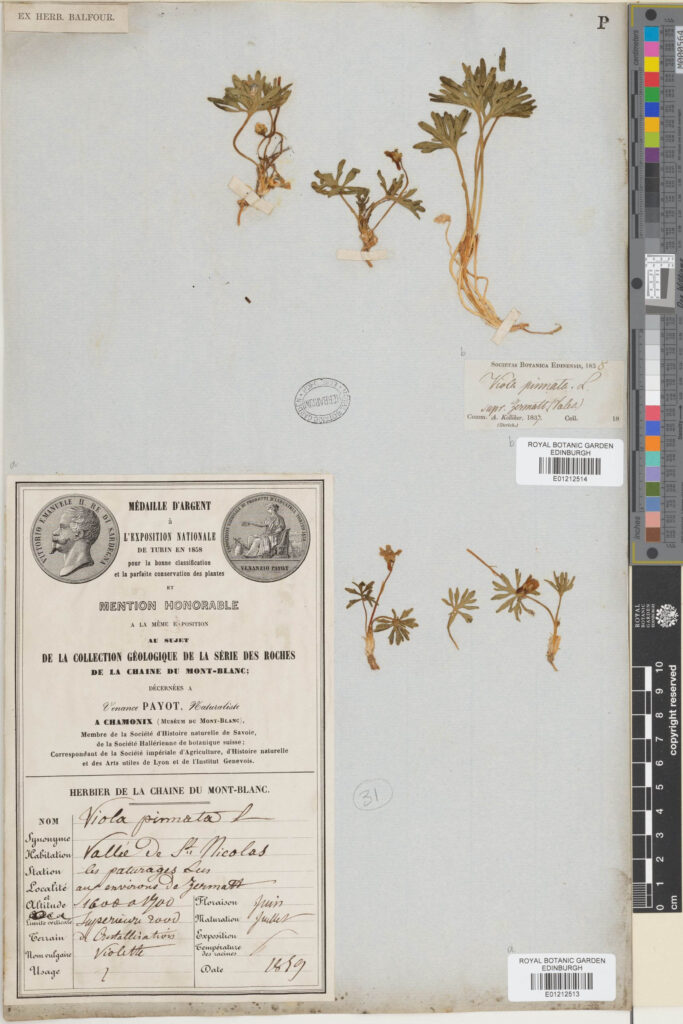The following blog was written by Linde Hess a digitiser in the Herbarium.
Since 2021 we have increased our digitisation capacity with the goal of getting to 1 million specimens imaged by Autumn 2024. Each digitiser is assigned a family of plants to work through. This series of blogs will spotlight the families that have been completed by a member of the team.
Teh Violaceae are a cosmopolitan family, mostly occurring in temperate areas, but also in the mountainous areas of tropical regions. The family encompasses about 20 genera and over 1000 species. The three largest genera are the primarily herbaceous Viola, mostly woody Rinorea, and herbaceous Hybanthus (polyphyletic, being dismantled). Violaceae flowers always have 5 petals, sepals and stamens.
Violets had and have many uses, the Romans made wine from them for instance. In the 16th century sap of wild pansy (Viola tricolor L.) was used with alum solution to create green paint. Robert Dodoens stated in 1554 that drinking an extract of these flowers can cure young children and helps clear the lungs.
In Bohemia it was believed violets lost their scent after the first thunderstorm of the year. Perhaps this can be explained by the fact that scented species flower earlier in the year and the later species are odourless (Compendium van rituele planten in Europa, De Cleene & Lejeune, 2003).
The violet was also the emblem of the empirical party of Napoleon. On the eve of leaving France for Elba he said to his friends: ‘I shall return with the violets,” and this little sentence -a mere chance expression- was sufficient for his sympathizers. Not only were the flowers worn by the Bonapartists as a badge, but violet ribbons and jewellery in the form of the flowers were speedily used to display their feeling. During Napoleons second rein, the violet trade flourished greatly in France, 6,000,000 bunches, being the annual sale in Paris alone (Philadelphia Press Volume 61, Number 23, 4 June 1898).


Viola odorata was grown on a large scale in France for its fragrant oils, used in perfumes. For the village Tourette-sur-Loup, situated near perfume epicentre Grasse on the Côte d’Azur, Viola odorata is of economic importance. Villagers began to grow violet for the perfume industry, due to globalisation production moved to France, Italy, and China. The annual violet festival takes place in March and announces the end of the growing season.
We have over 200 Viola odorata specimens in our collection, the oldest collected in 1914 by Edgar Evans in Bonaly, Edinburgh. The label refers to an older specimen, collected in 1880 by his grandfather at the same site, which may be databased under another name in our catalogue as it is not in there as Viola odorata.

Our Collections
Mass digitisation added 4,722 to the 3,018 specimens already in our online database. The total number of specimens after mass digitisation is 7,740. There are currently 106 Type specimens in our herbarium. Out specimens can be viewed here.
Top 5 Filing Regions
| No. of Specimens | Herbarium Filing Region |
| 1,742 | Europe excl. Britain and Ireland |
| 1,518 | Britain and Ireland |
| 1,177 | North America |
| 601 | Inner China, Korea and Taiwan |
| 414 | Arabia – Arabian Peninsula |
Top 5 Genera
| No. of Specimens | Genus |
| 6,892 | Viola |
| 373 | Rinorea |
| 362 | Hybanthus |
| 55 | Melicytus |
| 15 | Agatea |
We only have one specimen each of the following genera: Isodendrion, Noisettia and Orthion. Isodendrion is a genus endemic to Hawaii, this is not an area where we tend to collect, so we would not expect to see more specimens in our collection. The other two genera occur in Central America and Tropical South America which are not our main research areas, but where we have more links to and therefore may expect to have more specimens from.
Interesting specimens
Venance Payot won a Silver Medal with this specimen in Turin in 1858 at the Sesta Esposizione Nazionale di Prodotti d’Industria. Payot has been reported as being the youngest person at that time to have reached the summit of Mont Blanc. In 1843, and at the age of 16. A book has been published in 2006 documenting his life and the plant specimens he collected, mainly on mountains in France. (https://www.leboncoin.fr/ad/livres/2890840979)

